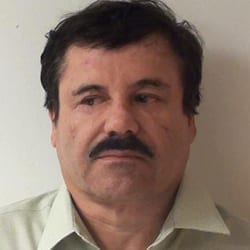The escape of Chapo Guzman, the most powerful drug trafficker in Mexico, was a humiliating setback for the administration of Enrique Peña Nieto. Guzman’s escape will force a government shift on extradition, embolden Mexico’s marines and may be a source for internal rifts within the Sinaloa Federation (an international drug trafficking, money laundering, and organized crime syndicate), though their common enemies will likely keep them unified.
Two predictions:
- The Mexican government will now be forced, either through legislation or a publicly stated policy shift, to create a form of rapid extradition. Extradition to the United States has long been an important tool of Latin American governments fighting serious drug trafficking organizations. The ability of these groups to continue to run operations from behind bars in Mexico and Colombia is a significant problem that can be mitigated through extradition. Chapo Guzman’s first escape (2001) was timed around a Mexican Supreme Court decision on the ability to extradite Mexican citizens who did not also have U.S. citizenship.
- Mexico’s Marines will not bring Chapo Guzman to the judicial system again. Much like Pablo Escobar, Chapo Guzman has a demonstrated capacity to bribe or intimidate the judicial and penal system. Mexico’s government cannot credibly claim to be able to incarcerate Chapo Guzman. While Mexico’s Navy will not state it as policy, it will likely make sure that Chapo Guzman dies in a kill/capture during a “firefight.” U.S. law enforcement agencies will likely close ranks with the Marines in terms of continued cooperation and the provision of signal intelligence to capture Guzman.
Analysis of short-term impact
Patrick Corcoran of Insight Crime has argued that Guzman’s escape will likely lead to expansionist policies by the Sinaloa cartel. I concur that this is a likely scenario that fits with past behaviors and modus operandi, including Guzman’s expansionist policies in the Tijuana plaza (2000s), Juarez (2007-present) and Nuevo Laredo (2003-2007).
Internal conflict?
There is, however, another scenario that we should consider. Chapo Guzman’s escape may cause problems internally for the Sinaloa cartel. It is an open question as to whether or not Guzman’s partners such as Caro Quintero, Mayo Zambada and El Azul knew about the escape plan. Guzman is notorious for compartmentalizing operations. For the sophisticated escape plan, there must have been a very small circle “in the know.” However, he may have kept his escape plans secret even from his Sinaloa cartel affiliates.
When Guzman was incarcerated in February 2014, many speculated on the impact on organized crime in Mexico. For the most part, there were limited shifts. The DEA in Arizona commented that its intelligence indicated that in the Sonora region, south of Arizona, nothing structural had changed save a shift of leadership from Guzman’s men to Mayo Zambada’s (a second Sinaloa cartel leader) men. This suggests that El Chapo continued to run operations from prison but was more limited in his capacity.
The escape of Guzman poses pros and cons for his allies. He is a strong player with significant resources and acumen. Further, all government resources will now be diverted from the recapture of Caro Quintero (released before Guzman’s capture in 2014) and Mayo Zambada, who became the next clear top trafficker in the network. On the other hand, Guzman may attempt to reassert control over areas Mayo and Caro Quintero have taken over. This could lead to internal conflict within the Sinaloa cartel. Also, Chapo’s likely expansionism will draw increased governmental attention to the Sinaloa cartel networks.
While internal conflict should be monitored, the most likely scenario is that Sinaloa cartel affiliates will close ranks to counter challengers such as the Cartel de Jalisco Nueva Generacion (CJNG). As Corcoran has pointed out, this group has taken advantage of the government targeting of other groups and expanded rapidly. It has also formed alliances with other cartels such as the remnants of the Cartel Arellano Felix in Tijuana, according to Zeta Weekly.
Nathan P. Jones is a nonresident scholar in drug policy and Mexico studies at the Baker Institute and an assistant professor at Sam Houston State University. His forthcoming (2016) book published by Georgetown University Press is on organized crime in Mexico.
